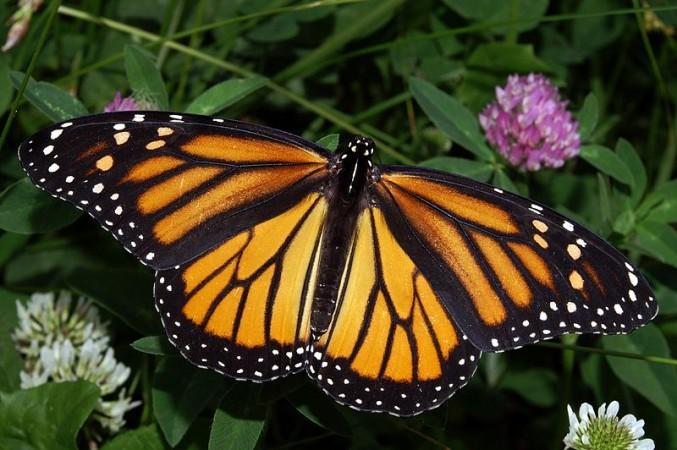
Monarch butterflies are known to make make a splendid journey every year, travelling thousands of miles from the eastern parts of North America to Mexico. Scientists have now found how these butterflies travel the vast distance.
They concluded that butterflies have the answer in their wing shape, after examining the difference among the migratory butterflies' size, shape and color. Although, previous studies have showed variations in wing-size within the migratory butterflies, they didn't measure the wing shape and color, according to Phys.org.
The researchers identified the monarch butterflies that migrated from northern Georgia in 2010. Each of the monarch was then scanned using a flat bed scanner to produce a digital copy of their wings. A computer software was used in order to measure the features of the wings and it was found that early migrants not only had larger wings but they were more elongated too. In addition to this, the migrants had reddish wing color, which is in tune with some previous findings that butterflies having redder wings tend to fly farther.
In the article "Variation in wing characteristics of monarch butterflies during migration" published in journal Animal Migration, the authors Dara A. Satterfield and Andrew K. Davis, for the first time describe a close association between optimal wing design and migration timing in the migratory butterfly. They found that monarchs that could not involve in migration and which might not survive are less likely to have ideal wing designs.
The scientists further found that the latest monarch butterflies that migrated were more likely to be smaller with paler wings and less elongated wings. This suggests that these newly discovered features slow the migratory pace.
The finding provides evidence of the significance of optimal wing characteristics for migration. The feature has until now been displayed in relation with migratory birds but for monarch butterflies it appears to be fresh finding. According to the authors, the earliest migrants have the maximum chance of success in making way for their winter home. They suggest that these monarchs should be preserved for scientific studies and for conservation purposes.
The details of the findings have been published in the journal Animal Migration.
















